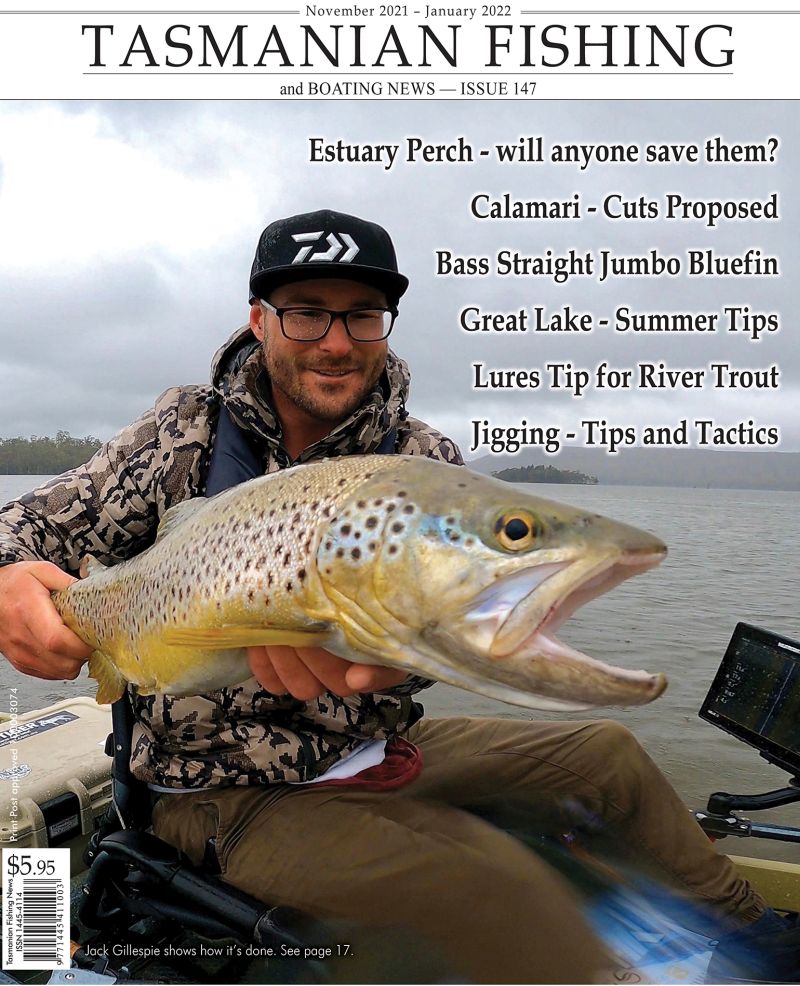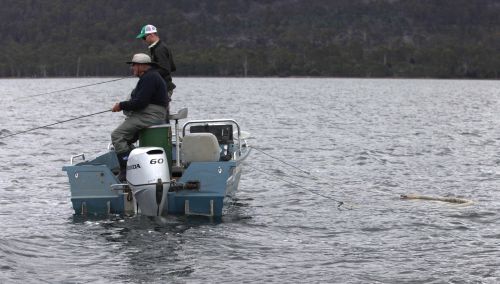Fishing from the Jetty
Daniel Paull
Intro
Fishing from a jetty is a great experience for people of all ages, especially for the amateur angler. Tasmania has some great jettys and piers along the coastline, Georges Bay being my personel favourite. Fishing from jettys can produce some great species. The best thing about jetty fishing is that you don't have to take a truck load of gear. All you really need is is a hook, line, sinker and bait. Prawns and squid usually do the trick and if you are like me and want to catch something huge, take some pilchards. I started my landbased fishing on a jetty on the beach across from Jetty Road (Georges Bay). It produced some great fish until it was closed to the public. There are still many great jettys to fish from in our great state. I can easily say that any jetty is a good one.
What you can catch
There are many species of fish that you can catch from a jetty and the range of fish changes during the day. Squid is the favourite species caught from jettys so it always pays to take a couple of squid jigs with you. Australian salmon, cocky salmon and tailor are a common catch, from depths of two metres upwards, and the occasional sand flathead can be caught in any depth of water.
Mullet can be caught by using a tiny hook and float and dough for bait and for a little fun I sometimes target eagle rays. The eagle ray is one of the fiercest fighting fish you will encounter at a jetty and the lighter the gear, the more they play up. I target these fish because of the thrill and excitement you can get out of them. Some eagle rays I have caught have jumped clean out of the water!
What to use
All you need to fish successfully from a jetty is a hand line or a typical 4-6 kg fishing rod and reel. The key to fishing from jettys is to use unweighted baits. Usually the hook and bait has enough weight to get through most wind and if the wind is to strong for an unweighted bait, just simply clip on a split shot sinker. I always take a loaf of white bread whilst fishing on a jetty as you can use it as bait and you can establish a burley trail with it to attract garfish and mullet.
For my favourite, the eagle ray, I use a 10 kg outfit with a 24 kg trace and a medium sized long shanked hook and a fresh fillet of any fish. Garfish and mullet are the best in my opinion. Try not to use wire traces or leaders as the fish can sense it.
Rigs
Shown below are the three main bait rigs I use whilst fishing from jettys. They are self explanatory.
How to hook a big fish
When fishing for any shark, skate or rays from any environment you must always have your drag loose so when a fish takes of with the hook and bait it won't feel any pressure from the rod.
When you set up your rod and made the cast make sure you can pull the line off the reel with ease. Do not loosen it too much though. You don't want a giant birdsnest, but you do want the fish to be able to take line. When you see your rod slightly bending over, there is most likely a fish on the line. Pick up your rod and tighten the drag and once you feel a little bit of weight, strike the hook. You can be there angling the fish for two minutes or two hours. That is the beauty of jetty fishing - it can bring some real surprises.
Care for your catch
As most of my friends know, I am mostly a kiss and release angler. There is nothing beter than letting your friends reel in a beautiful big fish and taking a couple of photos and then seeing them swim off safely.
One fish I target from jettys is the eagle ray. They are terrible eating and it is best to release them. Try not to damage the protective layer of slime on the ray's skin as this can lead to serious injury or death. Most sharks and skates need to be revived after a long fight or being held out of the water for long periods of time for removing the hook and getting some snap shots with the camera. To revive the fish, simply hold the tail of your catch and hold it completely under the water and push it two and thro, creating a swimming action. When the fish kicks and makes a commotion you can let go of its tail.
Always remember; only take what you need for a feed! Unfortunately while fishing from a jetty on the north-west coast with some friends I have seen some grizzly things. Just after dark a couple of people caught a small draughtboard shark. As soon as I saw the gaff come out I new it was over for the shark. To my disgust they gaffed the shark and dropped it on the deck of the jetty. They cut its belly open, removed the hook and bait and kicked it back into the water. These bogans need to be educated on catch and release. Don't kill anything that you have no intetion of eating. To kill something to retrieve a ten cent hook is a joke. These fish are poor eating, and should of been realesed and able to be caught again by our future anglers.
Times and Tides
I believe that the best way to fish of a jetty is when the tide is on its way in. The best tide, depending on were you are fishing is a midday tide. Always try to fish the tide running in as the fish will be coming in to look for food. As your bread trail goes out the fish will follow it the jetty. As the depth is incresed the bigger fish will be attracted to the action of the surface caused by you bread trail. Tide changes play an important role in any type of saltwater fishing and you need to keep a constant eye on the increase and decrease of water in your surrounding environments.
Daniel Paull



